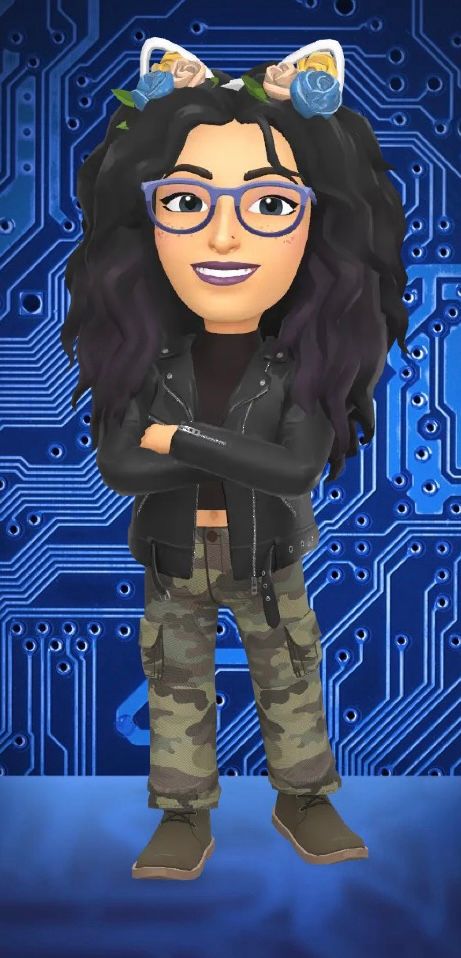Comprehensive Python Booklist for Computer Science Educators: Elevate Your Classroom Techniques
Here is a curated list of books that Computer Science teachers can use to enhance their Python programming knowledge and incorporate effective teaching materials into their classrooms. These books cover a range of skill levels and include practical examples, exercises, and teaching resources.
1. "Python Crash Course" by Eric Matthes
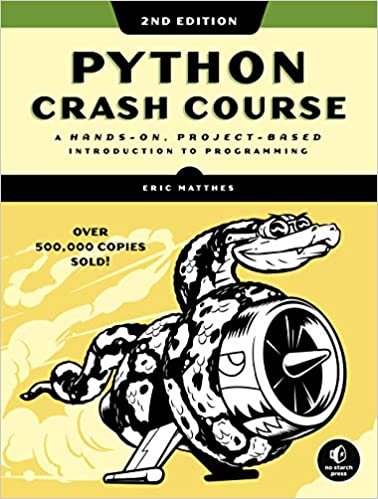
- Description:
- This is a fast-paced, comprehensive introduction to Python programming for beginners. The book is divided into two parts:
- Part I covers basic programming concepts such as variables, lists, functions, and classes.
- Part II includes three projects: a Space Invaders-style game, data visualization, and a simple web application.
- Why It's Good for Teachers:
- Clear explanations and a practical approach make it easy to understand and teach fundamental concepts.
- The projects can be adapted for classroom use, providing hands-on experience for students.
- Includes exercises at the end of each chapter to reinforce learning.
- This is a fast-paced, comprehensive introduction to Python programming for beginners. The book is divided into two parts:
Suitable For: Beginners to intermediate learners; teachers looking for project-based learning materials.
Classroom Use: The practical projects, such as making simple games and data visualizations, can be directly applied in classroom activities to engage students.
2. "Automate the Boring Stuff with Python" by Al Sweigart
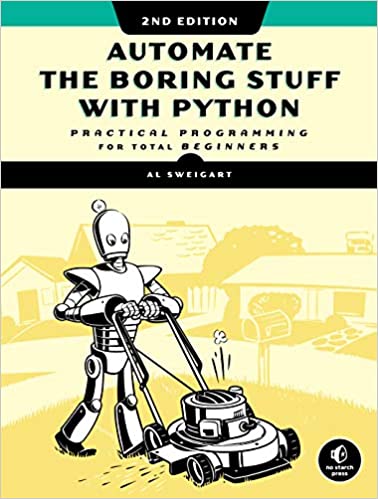
- Description:
- Focuses on practical Python applications for automating everyday tasks such as updating spreadsheets, parsing PDFs, and sending emails.
- Uses a hands-on approach with real-world examples that make learning engaging and relevant.
- Why It's Good for Teachers:
- Demonstrates how Python can be used to solve practical problems, which can inspire students and show real-world applications.
- Includes a free online version and accompanying video tutorials.
- Exercises and practice projects are provided for reinforcing concepts.
Suitable For: Beginners; teachers wanting to showcase practical uses of Python in various domains.
Classroom Use: Teachers can create fun assignments where students automate simple tasks, like file management or data manipulation, which reinforces real-world programming skills.
3. "Think Python: How to Think Like a Computer Scientist" by Allen B. Downey
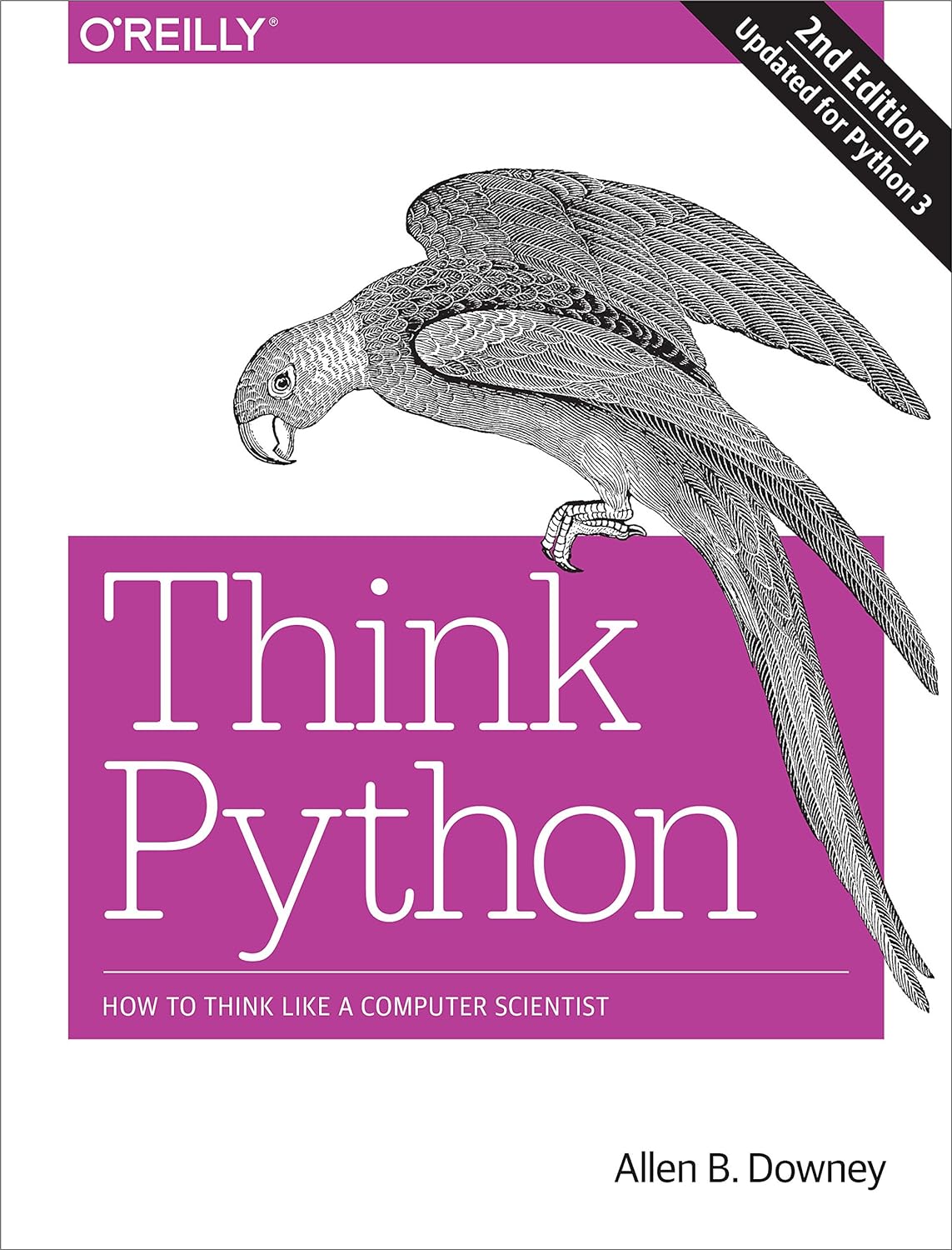
- Description:
- Emphasizes the development of programming and problem-solving skills through Python.
- Introduces concepts gradually with clear explanations and examples.
- Encourages readers to think critically and understand the underlying logic of programming.
- Why It's Good for Teachers:
- Offers a strong foundation in computer science principles alongside Python syntax.
- Exercises at the end of each chapter are designed to deepen understanding and can be used directly in classrooms.
- The book is available for free online under a Creative Commons license.
Suitable For: Beginners to intermediate learners; teachers focusing on fundamental computer science concepts.
Classroom Use: Exercises in the book are designed to encourage students to think critically and solve problems, making it ideal for homework or coding challenges in class.
4. "Fluent Python" by Luciano Ramalho
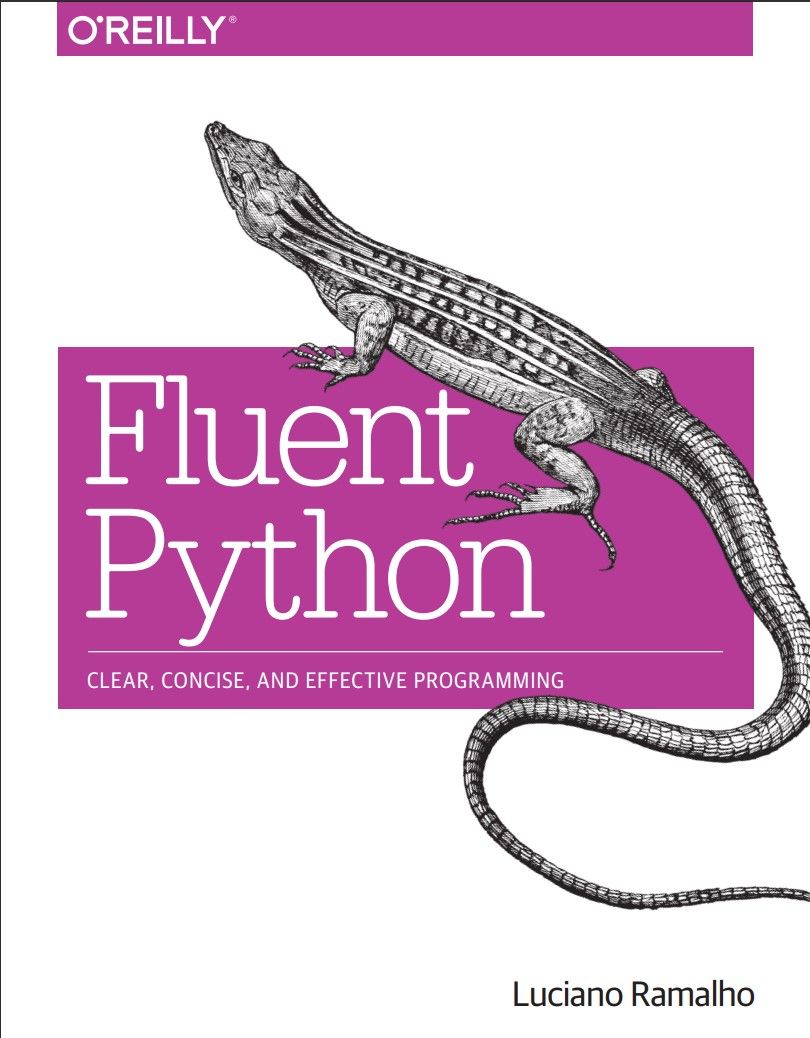
- Description:
- Provides in-depth coverage of Python's advanced features and best practices.
- Covers topics such as data models, decorators, generators, concurrency, and metaprogramming.
- Why It's Good for Teachers:
- Helps educators deepen their understanding of Python, enabling them to teach more advanced topics confidently.
- Contains numerous examples and detailed explanations that can be adapted for advanced students.
- Encourages writing efficient and idiomatic Python code.
Suitable For: Intermediate to advanced learners; teachers aiming to master Python's advanced features.
Classroom Use: Teachers can use this book to introduce advanced concepts like object-oriented programming, iterators, and decorators, which are important for students aiming to pursue computer science more seriously.
5. "Python for Kids: A Playful Introduction to Programming" by Jason R. Briggs

- Description:
- Introduces Python programming in a fun and engaging way, suitable for younger audiences.
- Uses simple language and entertaining examples to teach basic programming concepts.
- Includes colorful illustrations and kid-friendly projects like games and animations.
- Why It's Good for Teachers:
- Provides resources and examples tailored for engaging younger students or beginners.
- Exercises and projects can be easily incorporated into classroom activities.
- Helps make programming approachable and enjoyable for students.
Suitable For: Beginners, especially younger students; teachers looking for engaging introductory materials.
Classroom Use: The book offers playful and simple programming challenges, like creating games and drawing with the Turtle module, which can be directly incorporated into lessons.
6. "Python Programming: An Introduction to Computer Science" by John Zelle
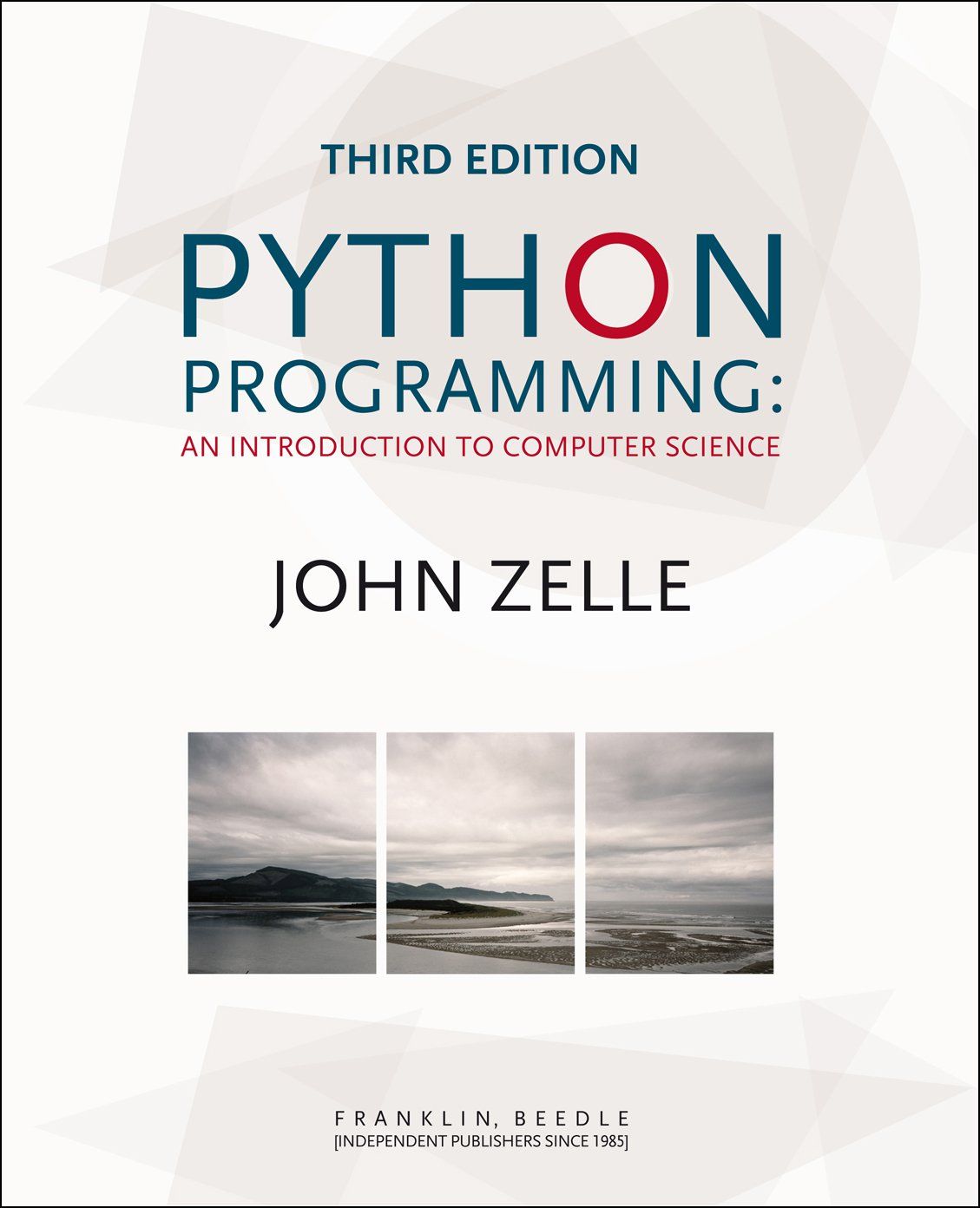
- Description:
- Designed as a textbook for introductory computer science courses using Python.
- Emphasizes problem-solving, design, and programming as core skills.
- Topics include data structures, algorithms, and software development principles.
- Why It's Good for Teachers:
- Structured approach suitable for semester-long courses.
- Includes end-of-chapter exercises, case studies, and discussion topics.
- Provides a comprehensive curriculum framework for teaching Python in a computer science context.
Suitable For: Beginners; teachers seeking a structured and comprehensive teaching resource.
Classroom Use: The book’s balance of theory and practice makes it perfect for designing a high school computer science curriculum that uses Python as the teaching language.
7. "Teach Your Kids to Code: A Parent-Friendly Guide to Python Programming" by Bryson Payne

- Description:
- Offers a step-by-step guide to teaching Python programming to children and beginners.
- Focuses on creating simple games and graphics to make learning fun and interactive.
- Uses clear explanations and approachable examples.
- Why It's Good for Teachers:
- Provides ready-to-use lesson plans and projects suitable for classroom settings.
- Emphasizes engaging and interactive learning, making it easier to keep students interested.
- Projects can be scaled in complexity to suit different age groups and skill levels.
Suitable For: Beginners, especially younger students; teachers seeking engaging project ideas.
Classroom Use: ideal for introducing Python programming to younger students in a fun and accessible way. It includes step-by-step instructions for creating simple games and graphics, making it perfect for engaging students who are new to coding. Teachers can use the book's projects and examples directly in lessons to teach basic programming concepts, such as loops, conditionals, and functions.
8. "Invent Your Own Computer Games with Python" by Al Sweigart
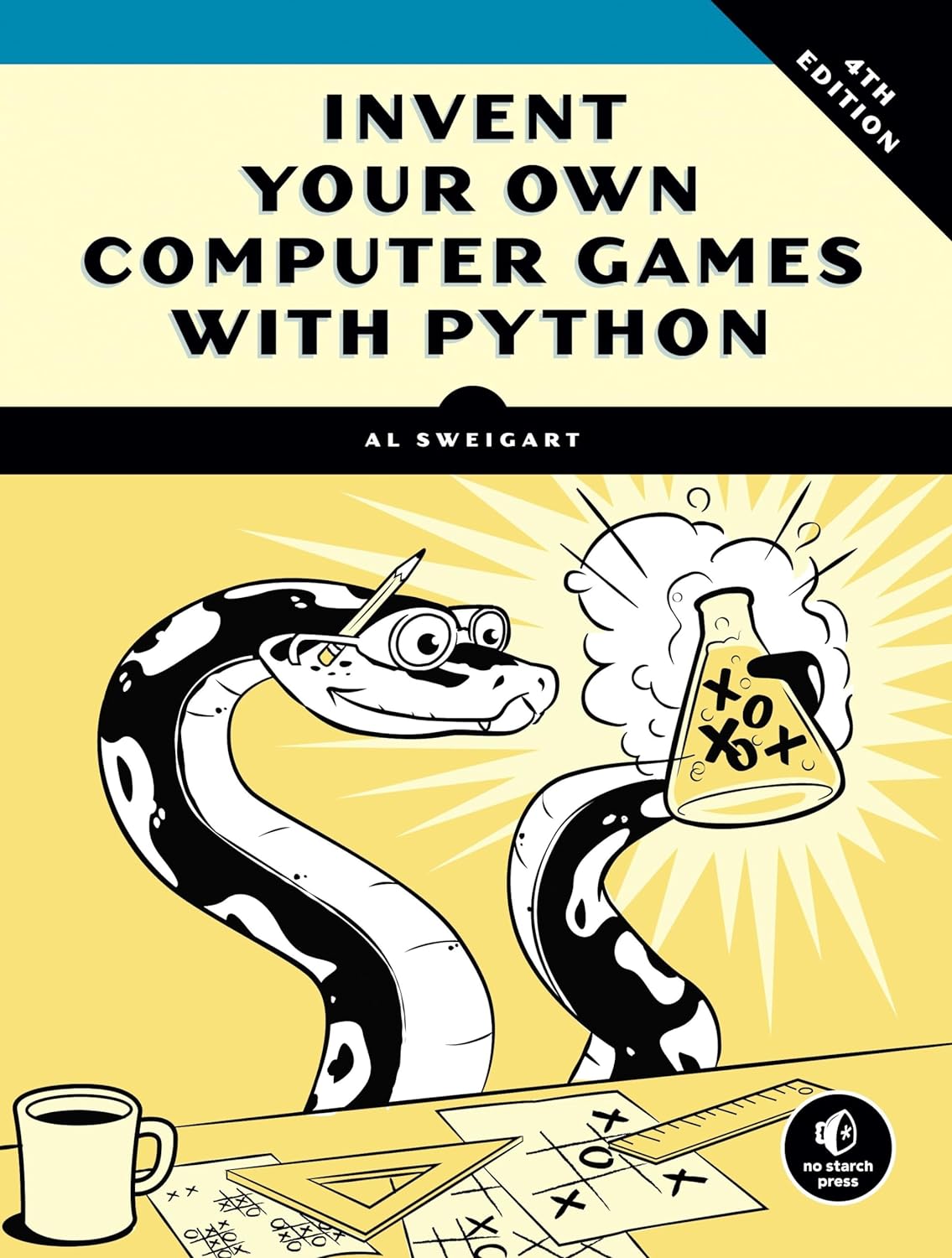
- Description:
- Teaches Python programming through the creation of simple computer games.
- Each chapter introduces new programming concepts and applies them in building a game.
- Projects include classics like Hangman, Tic-Tac-Toe, and Blackjack.
- Why It's Good for Teachers:
- Engaging way to teach programming concepts through game development.
- Provides complete project walkthroughs that can be used directly in lessons.
- Encourages creativity and problem-solving among students.
Suitable For: Beginners to intermediate learners; teachers looking for fun, project-based learning materials.
Classroom Use: Game development is an engaging way to teach students programming, and the book offers various game projects that students can code and expand upon.
9. "Head First Python" by Paul Barry

- Description:
- Uses a visually rich format to teach Python programming concepts in an engaging and interactive way.
- Focuses on quick, hands-on learning with real-world examples and puzzles.
- Covers topics such as data structures, functions, web development, and database integration.
- Why It's Good for Teachers:
- The engaging format can be used to capture students' interest and cater to different learning styles.
- Provides numerous exercises and activities that can be directly used in teaching.
- Encourages active learning and critical thinking.
Suitable For: Beginners to intermediate learners; teachers seeking interactive and engaging teaching materials.
Classroom Use: The book’s interactive exercises and engaging format can be used to create dynamic classroom activities that get students more involved in learning Python.
10. "Python Cookbook" by David Beazley and Brian K. Jones

- Description:
- Offers solutions to common and complex programming problems in Python.
- Organized into recipes that address specific tasks and issues, accompanied by detailed code examples.
- Covers a wide range of topics including data structures, algorithms, networking, and concurrency.
- Why It's Good for Teachers:
- Excellent resource for finding examples and exercises to demonstrate specific concepts.
- Helps educators prepare for and answer diverse coding questions from students.
- Useful for creating advanced assignments and projects.
Suitable For: Intermediate to advanced learners; teachers looking for practical problem-solving examples.
Classroom Use: is ideal for advanced classroom use, offering:
- Practical Examples: Ready-to-use coding "recipes" for lessons.
- Problem-Solving: Real-world challenges to enhance critical thinking.
- Advanced Concepts: Teaching complex Python features.
- Code Efficiency: Emphasizing best practices for maintainable code.
11. "The Big Book of Small Python Projects" by Al Sweigart
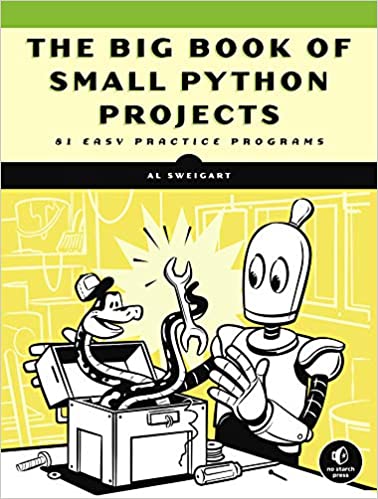
- Description:
- This book features 81 small Python projects that range from simple games to more complex simulations. Each project is designed to be completed in under an hour, making it ideal for quick lessons or coding challenges.
- Why It’s Good for Teachers:
- Provides a wealth of short, manageable projects that can be easily incorporated into lessons or used as assignments. The step-by-step instructions make it easy to guide students through the projects.
- Suitable For:
- Beginners to intermediate learners; teachers looking for quick and engaging programming exercises.
- Classroom Use:
- Perfect for quick coding sessions, individual or group work, and as inspiration for students to create their own projects. These projects can also be used for warm-up activities or coding competitions.
12. "Coding Games in Python" by DK Publishing

- Description:
- This book is designed to teach Python through game development. It walks students through the process of creating several simple games, from basic to more advanced, while introducing key programming concepts.
- Why It’s Good for Teachers:
- Engages students by teaching Python in a fun and interactive way. The book’s visual approach, with clear instructions and colorful illustrations, makes it accessible even for younger students.
- Suitable For:
- Beginners, especially younger students (middle school to early high school); teachers seeking an engaging, game-based approach to teaching Python.
- Classroom Use:
- Ideal for project-based learning, where students can work on game development as a way to learn coding. The games can be used as class projects, or as a basis for coding clubs or competitions.
13. "Coding Projects in Python" by DK Publishing

- Description:
- This book introduces a series of projects that teach Python programming through creative and practical tasks. Projects include drawing shapes, creating animations, and developing simple games.
- Why It's Good for Teachers:
- Offers a variety of creative projects that cater to different interests, making it easy to engage students with diverse motivations.
- Step-by-step instructions and visuals help simplify complex concepts, making it easier for teachers to explain and for students to follow.
- Suitable For:
- Beginners, particularly middle school to early high school students; ideal for introducing Python in a fun and accessible way.
- Classroom Use:
- Use the projects as hands-on assignments to reinforce Python concepts.
- Divide the class into groups to work on different projects, encouraging teamwork and collaboration.
- Use the projects as a basis for larger, interdisciplinary lessons that combine art, math, and programming.
By reading and applying ideas from these books, teachers can not only improve their own Python programming skills but also design engaging and effective lessons for their students.
Happy teaching!
